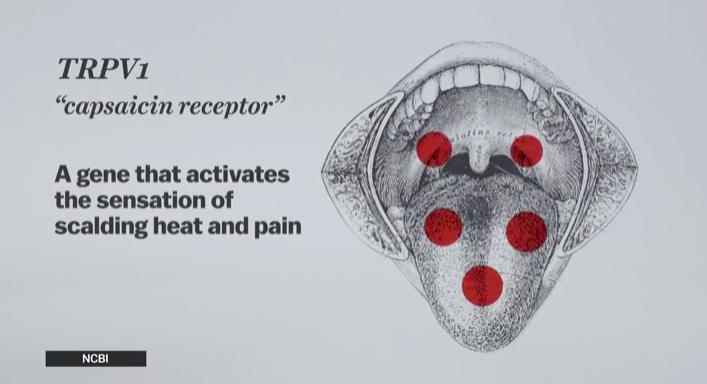DNA is the blueprint that defined who you are. For example, behaviours, physical appearance and your special traits, such as your spicy gene determine your tolerance to spicy food.
“Pain tastes like spices, it adds favours to life.”
Uma Dhamija
How does people senes the spicy flavour.
Your nervous system controls spicy sensation. The system detects pain and irritation through nerve endings that are sensitive to touch, temperature, and pain.
“What people call taste is actually flavour”
Dr. Bruce Bryant of the Monell Chemical Senses Center.
Moreover, plants have the ability to activate nerve receptors and result in different tastes.
For example, mint stimulates cool-sensitive nerves; however, for the compound in spicy food known as capsaicin triggers receptors in pain neurons.
Why some people cannot tolerate spicy food at all?
Here is the answer to your question, this is because of their genetic codes that are expressed in their DNA.
Furthermore, the best stimulator of TRPV1 gene (spicy gene) is temperature when it’s greater than 43 °C, in addition to the acidic conditions such as the irritating compound in hot chilli peppers and the pungent compound in mustard and wasabi.
Therefore, the activation of the TRPV1 gene lead to a painful and burning sensation.

Some researchers have found that certain people who can tolerate spicy food better might have just been born with lesser TRPV1 – which means they have less sensitivity to spice – or that the receptors itself are less sensitive to spicy food.
“The people born with no capsaicin receptors are those you see chugging bottles of super hot sauce. It’s similar to an allergy – there are people who are not allergic to poison ivy.”
Food historian Dave Dewitt
For more detailed information about your precious genes, dont hasitate and feel free to check out our website here or chat with us on Facebook to exchange ideas.
Reference list:
Anon, 2019. TRPV1 transient receptor potential cation channel subfamily V member 1 [Homo sapiens (human)] – Gene – NCBI. [online] Ncbi. Available at: <https://www.ncbi.nlm.nih.gov/gene/7442> [Accessed 29 Aug. 2019].
Thacker, A., 2013. Consent Form | Popular Science. [online] Pop science. Available at: <https://www.popsci.com/science/article/2013-06/fyi-are-people-born-tolerance-spicy-food/> [Accessed 28 Aug. 2019].
Okamoto, N. and Okumura, M. (2018). Effect of single-nucleotide polymorphisms in TRPV1 on burning pain and capsaicin sensitivity in Japanese adults. [online] NCBI. Available at: https://www.ncbi.nlm.nih.gov/pmc/articles/PMC6180359/ [Accessed 29 Aug. 2019].